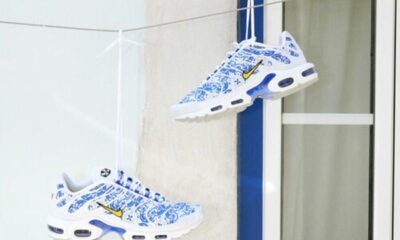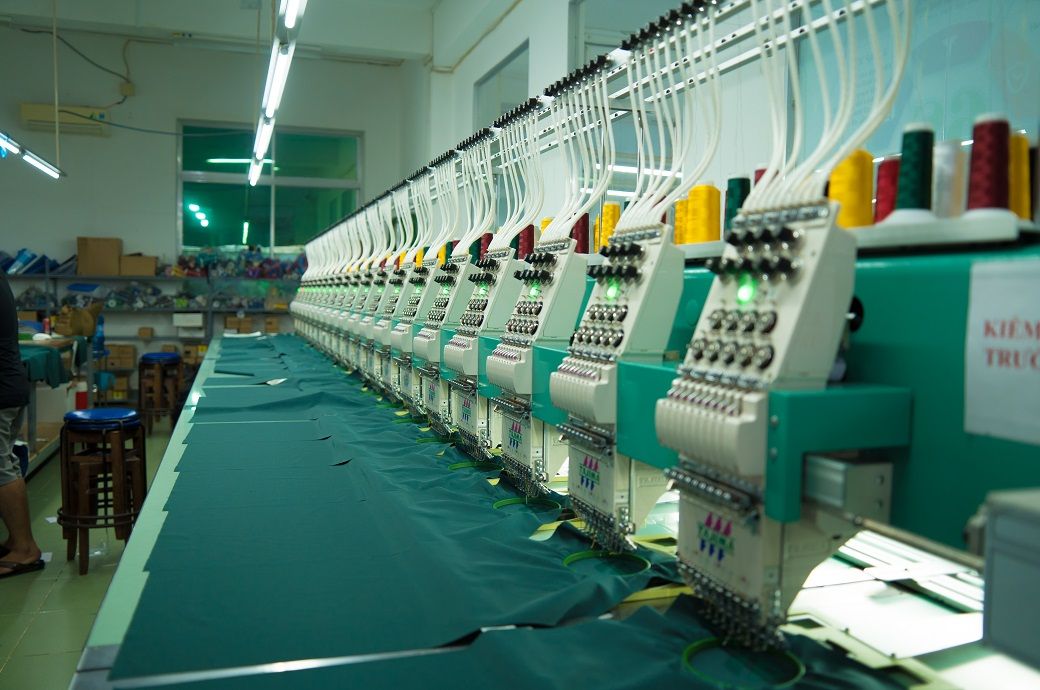Fashion
Milan unveils multifaceted vision of womanhood at Sportmax, Blumarine and Institution
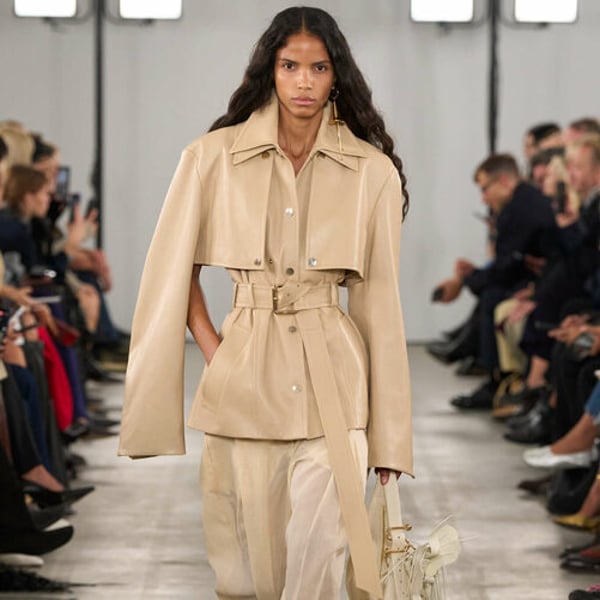
Published
September 26, 2025
On Friday, the fourth day of the womenswear ready-to-wear shows, Milan’s fashion scene showcased the breadth of its creativity with a packed programme in which a host of houses came to the fore, from established names and young labels to emerging talents, expressing a thousand and one facets of femininity. From Sportmax’s minimalist, chic woman to Blumarine’s romantic dark lady, via the sculptural matryoshka of Institution by Galib Gassanoff, spring/summer 2026 promises to be exciting.
Sportmax opened proceedings early in the morning with a beautiful collection that struck the perfect balance between raw minimalism and a diffuse sense of softness. Most looks were monochrome, beginning with an ultra-light palette of powdery, nude and cream tones that caught the light, and moving through to head-to-toe black. Silhouettes were elongated, sometimes to excess, as with faded baggy jeans so long they coil around the ankles.
Highly structured trench coats, sleeveless maxi coats, double jackets and leather blousons are cut with precise lines in crisp wools, gabardines and supple leathers, falling straight down the body.
Yet the overall impression was one of lightness — of floating, even — heightened by the introduction of airy, sheer fabrics, such as satin silk that ripples through long, fluid dresses, or organza used to make T-shirts and trousers, to stand in for jacket panels to lighten them, or as fine layers superimposed on certain looks.
To emphasise movement, garments were often layered one over another or deconstructed, as in these long leather trench coats whose upper part detaches into a Perfecto-bolero, reminiscent of the shoulder capes of yesteryear under which one can slip the arms with complete freedom. A multitude of gilt bells worn as earrings, bracelets or necklaces also set the rhythm with a heady chime.
The Blumarine woman also revealed her dual personality, by turns romantic and dark, through a wardrobe full of contrasts — between flou and tailoring, soft and deep hues.
“I wanted to explore the idea of a Gothic romanticism transported into spring. Fragility and freedom clash with strength and power. It’s up to the audience to decide which of these two attitudes will prevail,” said creative director David Koma backstage, adding that in the end, “it’s the soft side that stands out more, supported by structure.”
The fluctuating aspect of the outfits and the play of transparencies tipped the balance towards a hyper-feminine, sensual aesthetic. Twirling ribbons and cascades of chiffon ruffles compose vaporous blouses, dresses and capes. Airy silks and chiffons were layered, sometimes gathered, smocked or fringed. Black lace and guipure steered everything towards a slightly sultry boudoir world. Large crosses in sparkling stones, worn as earrings or layered as multiple pendants, underscored this subversive streak.
The designer also called on the butterfly, the Italian house’s emblematic motif. With their colourful wings, a multitude alight as embroidery on a cardigan or on a sheer, flesh-toned dress. Elsewhere, a butterfly encircled the bust on a white lace bra-top. Sometimes it morphed into a dragonfly and — on closer inspection — even a spider.
The duality of the Blumarine woman was very much in evidence. The pagoda sleeves of the sinuous frock coats and peignoirs with long trains that dress her for evening were reminiscent of butterfly wings as they are of bat wings.
With his new brand Institution, Azeri-born Georgian Galib Gassanoff offered one of the most compelling propositions on the Milanese scene. This has not escaped the very select Milanese boutique Antonia, which is dedicating its windows to him this week. After a well-received debut collection in February, the designer pursued his project with coherence, offering more commercial pieces this season, which he will show next week in Paris at the Maison Pyramide showroom.
For next summer, Gassanoff continues to draw on the ancestral know-how of Azerbaijan, in particular the braiding technique used to make woven or knotted carpets. He reprised this process, replacing wool threads with reclaimed shoelaces to create sculptural dresses and tops. He also introduced reedmace (Typha latifolia), which grows in marshes and is woven by women in the south of the country. Working with these communities, he had them braid a series of majestic, swirling gowns and a poncho.
Another inspiration is the “chepken”, a traditional coat with oversleeves. The designer transformed this piece into a tailored jacket, nipped in and rounded at the sides. The curved shape recalls Christian Dior’s famous Bar suit, but here the construction was modernised. Two long panels of fabric fall from the shoulders like stoles, under which the arms can slip. In another version, the jacket was slit at the sides and these two false sleeves fold over the front, tied around the chest, transforming it into an elegant top.
A host of other ingenious ideas also proved alluring. Like a top whose front was covered with white wooden buttons from the archives of historic button-maker Ascoli Bottoni; smock-like organza overlays, puffed out at belly height, that encased the silhouette in different colours; or large apron-like leather plastrons, fashioned from long shoelace straps or various braids, worn hanging from the neck.
This article is an automatic translation.
Click here to read the original article.
Copyright © 2025 FashionNetwork.com All rights reserved.
Fashion
Vietnam’s apparel production up 13.3% YoY in Jan-Oct 2025: NSO
Fashion
Australia’s apparel imports down 1.4% to $2.1 bn in Q1 FY26

On a month-on-month basis, apparel imports rose *.** per cent in September **** to Au$*.*** billion, compared to Au$*.*** billion in September ****. This gradual increase is linked to seasonal restocking ahead of the year-end promotional cycle and anticipated holiday sales.
In contrast, imports of textile yarn, fabrics, and made-up articles (code **) increased by *.** per cent to Au$*.*** billion (~$***.** million) during July–September ****, up from Au$*.*** billion in the same period of the previous fiscal. The rise suggests steady activity in domestic manufacturing segments such as apparel, upholstery, and home textiles, where mills and converters are maintaining production schedules after earlier cost and demand adjustments.
Fashion
The LYCRA Company announces new spandex production facility in China
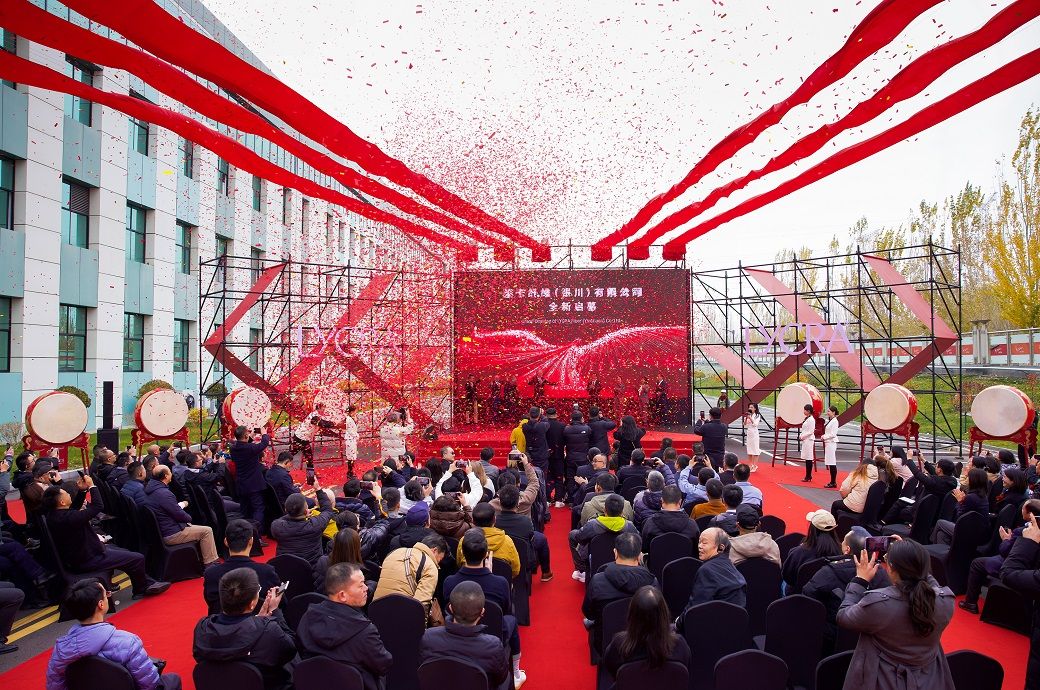
The LYCRA Company, a global leader in innovative and sustainable fiber solutions for the apparel and personal care industries, today announced the official opening of its largest spandex production facility—the LYCRA fiber (Yinchuan) Plant in Ningxia Province, China. This milestone underscores the company’s continued investment in the Chinese market and highlights its strong commitment to developing localized supply and distribution networks while advancing smart manufacturing upgrades.
The LYCRA Company has announced the opening of its largest spandex plant in Yinchuan, China, investing over ¥ 800 million (~$1.12 million) with Yinchuan Financial Capital Investment Group.
The facility will add 30,000 tons of capacity and 500 jobs, with plans to expand to 120,000 tons.
It advances smart, sustainable manufacturing to meet growing Asia-Pacific demand for high-quality spandex.
With a total investment of more than RMB 800 million, the Yinchuan facility is being developed in partnership with The LYCRA Company and Yinchuan Financial Capital Investment Group. In its initial phase, the plant will add 30,000 tons of spandex production capacity, generating an annual output of over RMB 1 billion and creating approximately 500 jobs. Looking ahead, capacity is expected to expand to 120,000 tons annually, addressing the growing demand for high-quality spandex across China and the Asia-Pacific region, while enabling faster, more flexible supply chain solutions.
As The LYCRA Company’s second production site in China, the Yinchuan facility brings together the company’s expert management teams and global R&D capabilities to establish a highly automated, intelligent production ecosystem. Production at the Yinchuan facility will align with the company’s sustainability framework, driving energy savings, reducing emissions, and advancing manufacturing processes, ensuring that business growth and environmental responsibility remain inextricably linked.
“China is strategically important, representing over 50% of the global apparel production market, and this partnership enables us to optimize our product mix more broadly while meeting the increase in demand for quality spandex,” said Gary Smith, CEO of The LYCRA Company. “I would like to express my gratitude to the local authorities and all our partners for their support and commitment.”
Note: The headline, insights, and image of this press release may have been refined by the Fibre2Fashion staff; the rest of the content remains unchanged.
Fibre2Fashion News Desk (HU)
-

 Tech1 week ago
Tech1 week agoCISOs in court: Balancing cyber resilience and legal accountability | Computer Weekly
-

 Fashion1 week ago
Fashion1 week agoCoach reconnects with Bank & Vogue for upcycled bags using corduroy
-

 Fashion1 week ago
Fashion1 week agoGermany’s Adidas achieves highest-ever quarterly sales in Q3 2025
-

 Business1 week ago
Business1 week agoFirst new Amazon electric heavy goods vehicles hit UK roads
-

 Tech1 week ago
Tech1 week agoThe Security Interviews: Colin Mahony, CEO, Recorded Future | Computer Weekly
-

 Sports1 week ago
Sports1 week agoSources: QB Daniels dislocated elbow in loss
-

 Business1 week ago
Business1 week agoBP accelerates overhaul with higher asset sale target as profits beat forecasts
-
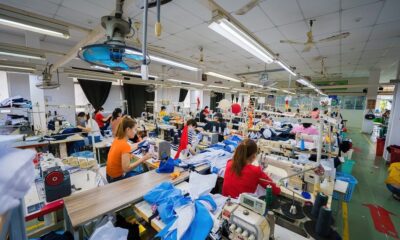
 Fashion1 week ago
Fashion1 week agoVietnam’s manufacturing growth hits 15-month high as PMI climbs to 54












